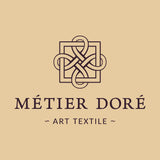From Where I Stand
Beauty from necessity lasts forever (a quote from a book on spinning paper).
This is life! Everything that passes through our hands to ensure our survival must be beautiful to transcend survival and make it a life. Marcel Réhel
***
When one begins to learn a skill, it is the mind that makes the hands work. When one advances in this skill, it is the hands that shape the mind.
Unknown
*
God has two hands and both are yours.
Unknown
Unknown
*
God has two hands and both are yours.
Unknown
*
My aim in weaving has always been completely opposed to what I imagine conceptual art to be. It's been a shamelessly simple one: just making something that is, to me, beautiful.
Peter Collingwood, weaver
*
(...) something that wears well, that you'll love for years to come. That's what anything fine is.
Jony Mitchell
*
Making something beautiful is an expression of knowledge.
*
There is a central quality which is the root criterion of life and spirit in a man, a town, a building or a wilderness. This quality is objective and precise but cannot be named. The search that we make for this quality, in our own lives, is the central search of any person, and the crux of any person's story. It is the search for those moments and situations when we are most alive. (...) There is one timeless way of building. It is a thousand years old, and the same today as it has ever been. The great traditional buildings of the past, the villages and tents and temples in which man feels at home, have always been made by people who were very close to the center of this way. It is not possible to make great buildings, or great towns, beautiful places, places where you feel yourself, places where you feel alive, except by following this way. And, as you will see, this way will lead anyone who looks for it to buildings which are themselves as ancient in their form, as the trees and hills, and as our faces are.
Christopher Alexander, The Timeless Way of Building, 1979
*
I have been a production potter and I believe that repetition has a significance that goes far beyond the idea of production. I strongly believe that repetition, rehearsal, and continuous practice are part of the fundamental elements of any art expression.
Pietro Elia Maddalena, potter
*
I feel within an impulse, perhaps that divine impulse which has moved all races in all ages and in all climes, to record enduring form and emotions that stir within. I may model these emotions in clay, carve them in wood, hem them in stone, or forge them in steel. I may weave them in textiles, paint them on canvas or voice them in song: but whichever I do I must harken always to the song of the lark and the melody of the forest and stream and respond to the color of the rose and the structure of the lily, so that my creation may be in accord with God's laws and the universal laws of order, perfect fitness and harmony. Moreover, I must make my creation good and honest and true, so that it may be a credit to me and live after I am dead, revealing to others something of the pleasure which I found in its making. Then will my creation be Art whether I be poet or painter, blacksmith or cobbler, for I shall have labored honestly and lovingly in the realization of an ideal.
C. Valentine Kirby
***
To be continued!
